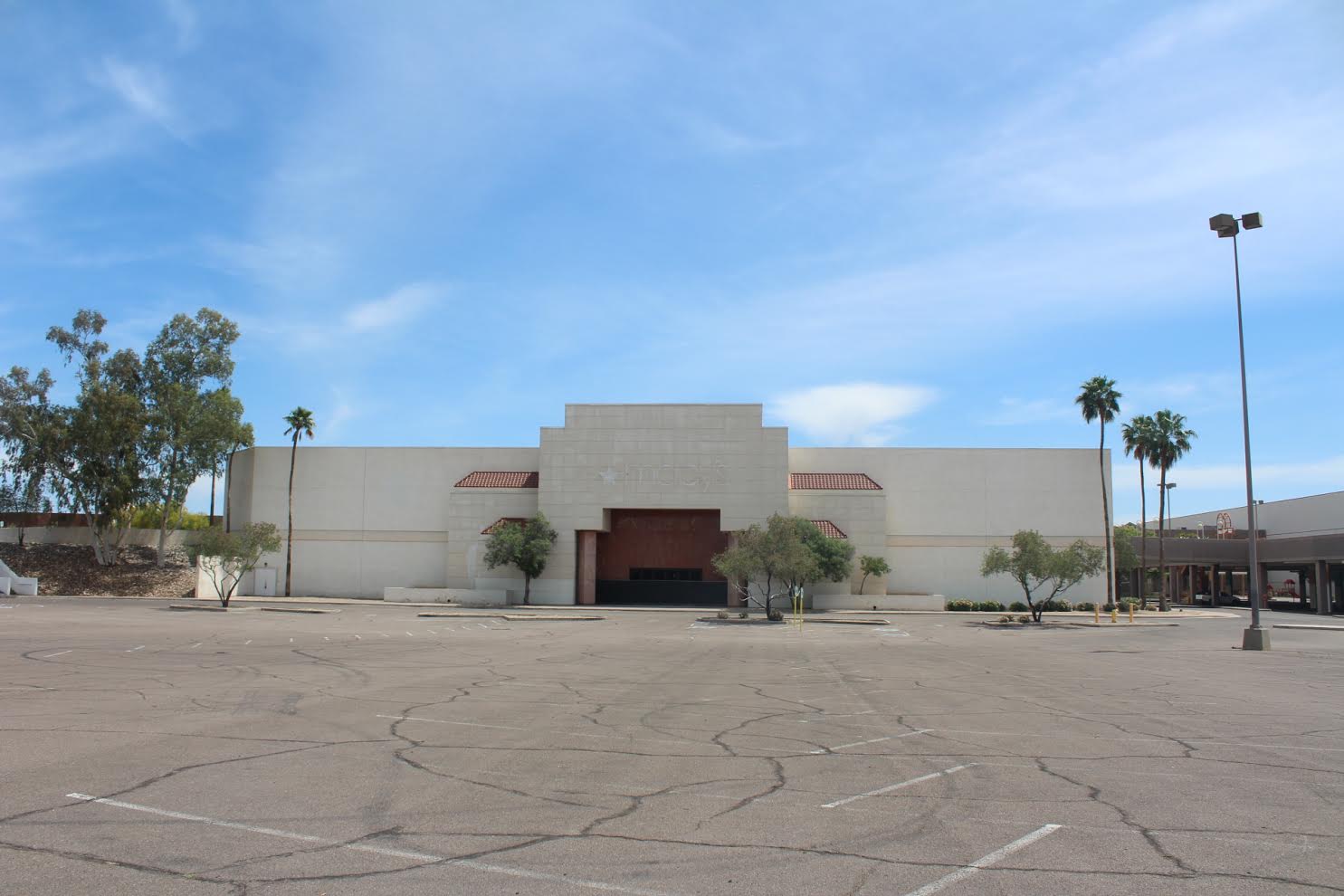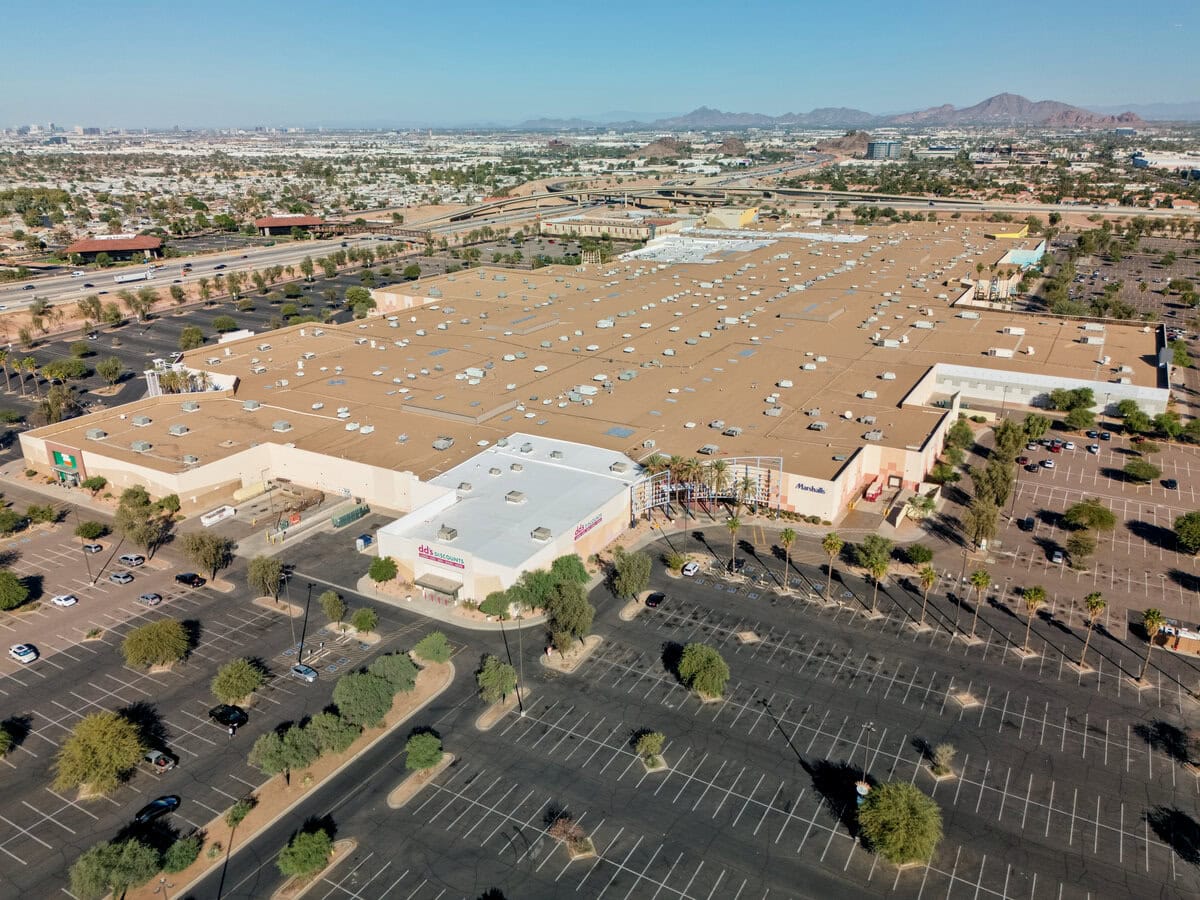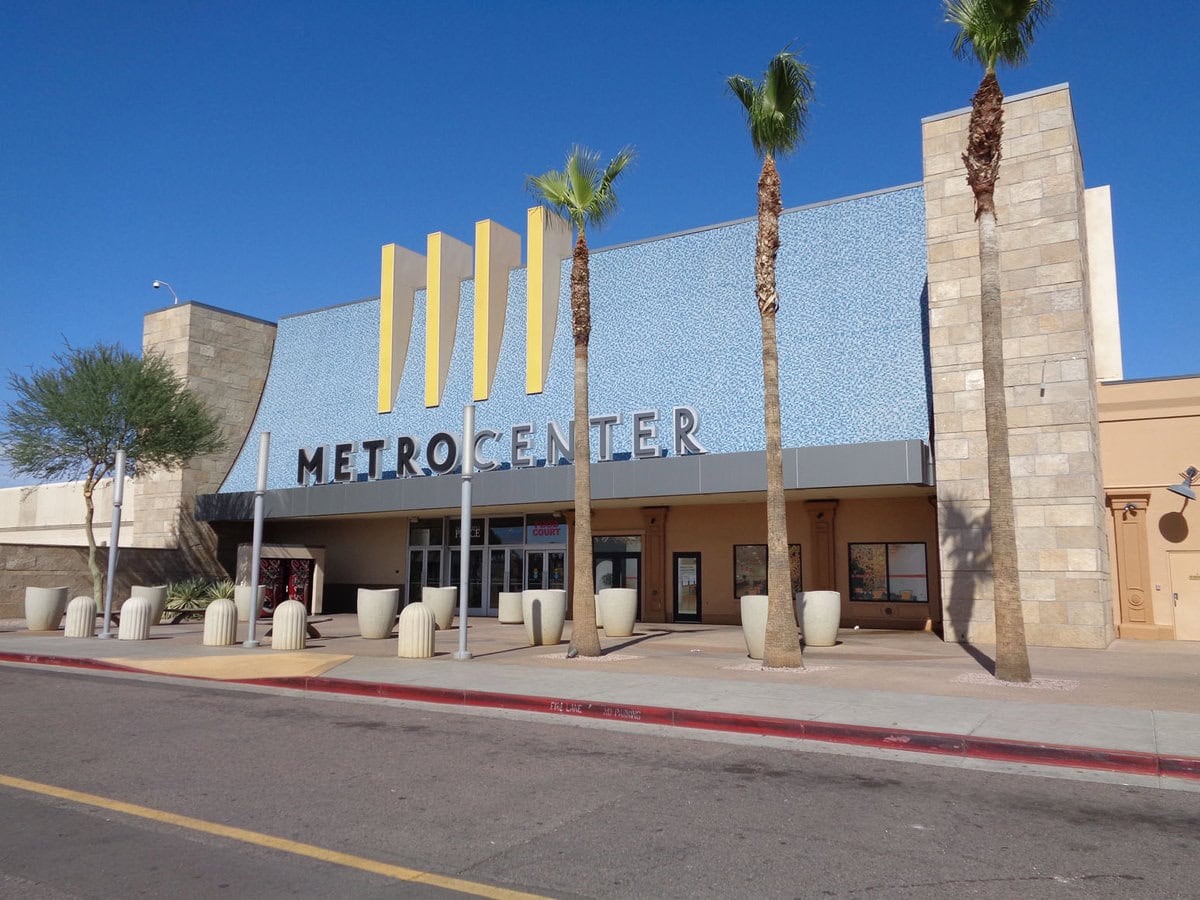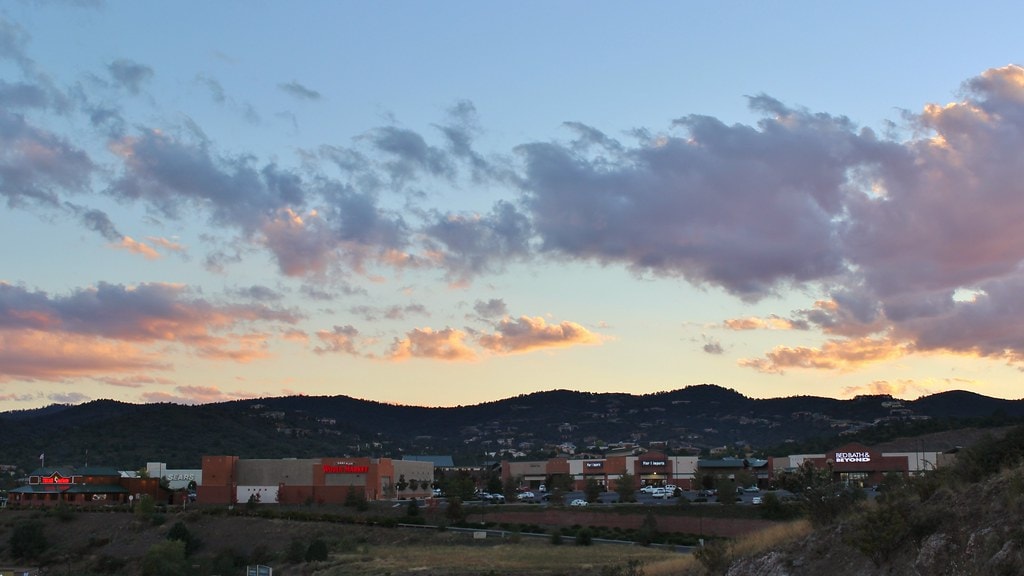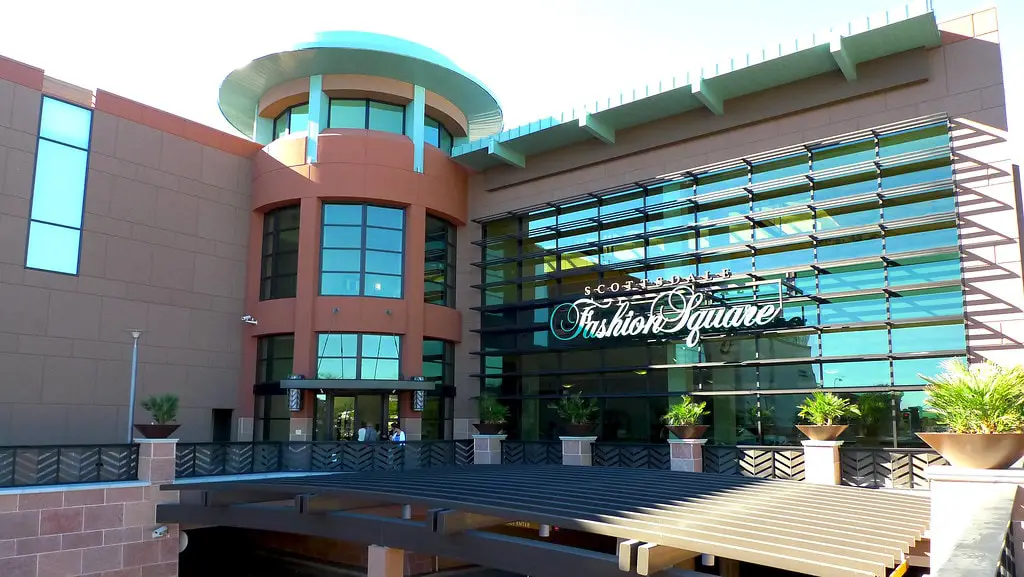Back When Arizona Mills Was the New Thing
There was a time when heading to Arizona Mills meant stepping into something that felt ahead of its time. Shiny tile floors, abstract graphic entrances, and neighborhoods inside a mall. People came to Rainforest Cafe and stayed for the kind of layout that made it hard to get lost.
It opened on November 20, 1997, with 6,000 parking spots ready and about 200 stores waiting.
Built by Mills Corporation and Taubman Centers, the place was massive but walkable, organized into six themed zones. It sat tucked beside I-10 and US 60, right where two highways dump traffic into Tempe.
These days, it still pulls in crowds looking for indoor things to do in Phoenix, but back then, it felt like something brand new was landing in the desert.
Launching the Retail Concept
Arizona Mills came together during the late 1990s mall-building wave, but the pitch here was different from other retail centers opening across suburban America. Developers Mills Corporation and Taubman Centers launched it as part of a larger effort to combine deep-discount retail with destination design.
The result opened to the public in November 1997, just ahead of the holiday shopping season, with around 200 tenants.
The early draw wasn't only the store count. It was the way the mall wrapped retail in an experience. Harkins Theatres and Rainforest Cafe opened alongside discount anchors, pulling visitors who wanted more than a quick errand run.
Mills Corporation's quarter stake reflected its strategy across the country at that time: build malls that served tourists and locals at the same time, with high tenant turnover but steady footfall. Arizona Mills made good on that idea right from day one.
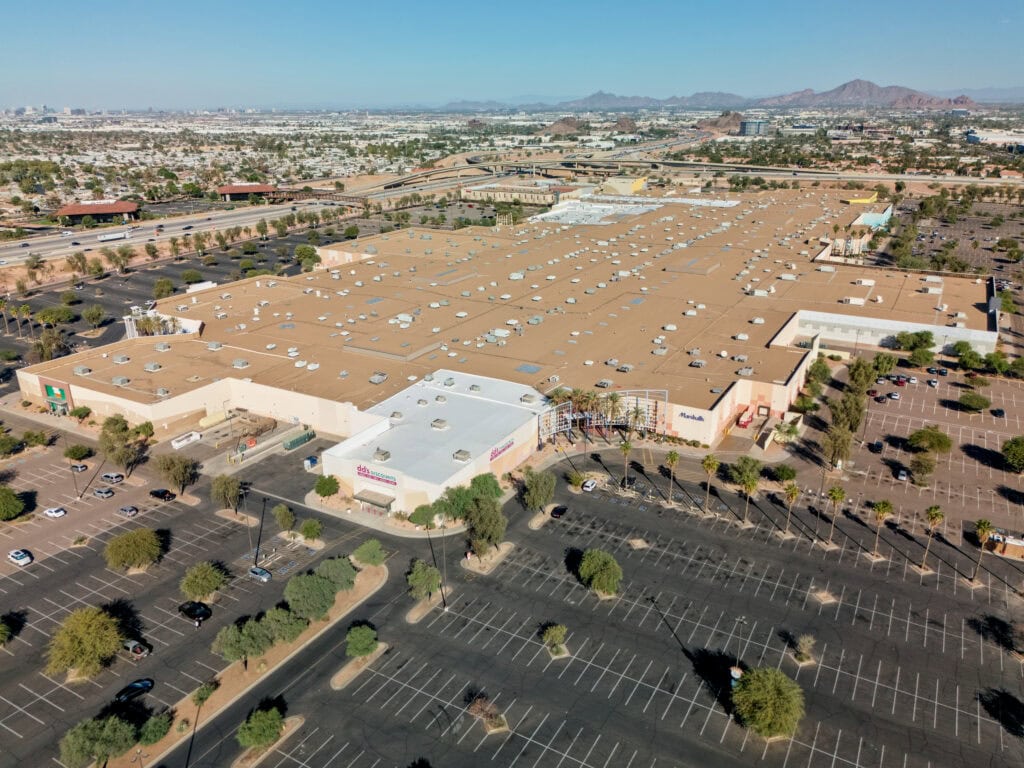
Ownership Deals and Corporate Swaps
The early setup gave Mills Corporation a 25% interest and left Taubman Centers with the rest. That changed when Simon Property Group stepped in. In 2007, Simon acquired Mills Corporation outright, absorbing its portfolio across the U.S. and folding Arizona Mills under the same umbrella.
Taubman still held its majority share, but not for long. Soon after the buyout, Simon secured the remaining 75% stake, becoming the mall's sole owner and manager.
That transition meant more than paperwork. Simon initiated a phased shift away from the branding and digital style that had marked all the Mills Centers. Arizona Mills was last in line for the update.
By June 2008, its website had been reworked to fit the Simon Malls format, matching changes that had already been completed across 16 other properties.
Internally, Simon began aligning the mall with its broader Arizona footprint. That included Phoenix Premium Outlets in Chandler and Tucson Premium Outlets, which focused more on outdoor layouts but shared overlapping tenants and seasonal promotions.
Arizona Mills became the third Simon-owned mall in the state, at least temporarily. The company later sold off Southgate Mall in Yuma and Metrocenter Mall in Phoenix. The acquisition chain shaped how Arizona Mills operated for the next decade.
Interior Format and Foot Traffic Design
Arizona Mills was built to keep people moving without stairs, escalators, or blind corners. The entire layout runs flat, sticking to a single floor spread wide instead of tall. At launch, it had 6,000 parking spots and clear routing from the lot to the storefront.
Inside, the mall is split into six neighborhoods, each built with a different aesthetic. Colors shift, ceiling treatments change, and seating clusters vary depending on which zone you're in.
The goal wasn't elegance; it was orientation. Shoppers could figure out where they'd already been based on what the place looked like, not which entrance they used.
The exterior didn't follow the standard stucco-and-signs design found in most malls built during the 1990s. Arizona Mills leaned into abstract shapes and painted graphics instead. These weren't just entry signs but full-scale installations that wrapped the building in bright motifs.
Inside, the mall incorporated local artwork from Arizona-based creators. The pieces weren't concentrated in one gallery corner either. Instead, they were dispersed across hallways, open spaces, and wall sections that might otherwise be empty.
It created visual breaks that worked like cues. You didn't have to memorize store names to find your bearings because the walls helped you get there.
Anchor Turnover and Leasing Gaps
As of mid-2025, Arizona Mills holds 16 anchor spots. Fifteen are active. One is empty. The lineup mixes national retailers with entertainment-driven anchors, some of which have been around since opening day. Harkins Theatres and the attached IMAX screen still occupy a large section.
Other long-timers like Rainforest Cafe and Ross Dress for Less have stayed put, joined by tenants such as Burlington, Marshalls, Q, DD's Discounts, Off Broadway Shoe Warehouse, Going, Going, Gone!, Reclectic and H&M. Legoland Discovery Center, Bubble Planet, Tilt Studio, and Sea Life Aquarium remain key draws for family foot traffic.
The anchor list has shifted. At one point, Forever 21 had taken over a large footprint. That space now sits dark. In 2024, Conn's vacated its spot entirely following the company's bankruptcy filing and exit from Arizona Mills. The vacancy didn't last long. By 2025, Q store moved into the former Conn's location, taking over the full anchor footprint and restoring occupancy to that section.
Smaller retailers continue to cycle through in-line spaces, but anchor conversions have slowed. Mall directories still label the former Forever 21 anchor as inactive, and no redevelopment notices have been posted in the area.

Attractions as Retail Extension
Arizona Mills didn't rely entirely on retail to stay in circulation. It placed long-term bets on attractions designed to outlast clothing trends and seasonal promos.
The Legoland Discovery Center was one of those moves. It's been open for years, offering controlled-entry access that anchors it apart from typical mall wander-throughs.
Sea Life Aquarium followed the same model. Both function more like ticketed mini-destinations than walk-in storefronts. They pull families who aren't just there to shop.
On the entertainment side, Harkins Theatres and the IMAX auditorium have carried the weight. The theater has outlived multiple retailers, keeping a steady stream of traffic tied to movie release schedules instead of retail calendars.
It's one of the few places in the area that offers both standard showings and large-format IMAX projection without requiring a separate venue.
In 2025, Arizona Mills debuted Bubble Planet, a 27,000 square foot immersive exhibit that opened February 21. It featured interactive rooms with lights, mirrors, virtual reality, and a pastel bubble ocean. By late May, photos and clips of Bubble Planet were spreading across social media. The installation's scale and placement filled unused anchor space and quietly shifted foot traffic inside the building.
Leasing Shifts and Foot Traffic Events (2024-2025)
Retail inside Arizona Mills isn't only anchored by national chains. As of early 2025, the addition of Reclectic marked a visible shift in tenant strategy.
The store opened on January 27 and filled a 100,000-square-foot footprint with heavily discounted inventory from brands like Urban Outfitters, Anthropologie, and Free People. Inventory ranged from clearance basics to wedding gowns priced around $300 before markdowns.
Reclectic positioned itself as a salvage outlet for the URBN brand family, and its Arizona Mills launch was the first of its kind for the chain.
Beyond storefronts, mall space has also been used for public-facing programs. On June 5, 2025, the Tempe Public Library organized a walking group called the Footnotes Walking Club.
They met inside Arizona Mills rather than outdoors, using the mall's climate-controlled corridors as a reliable circuit. The event didn't advertise commercial tie-ins or vendor promotions.
That same month, Arizona Mills partnered with the Tempe Chamber of Commerce to host a Business After Hours mixer. Scheduled for June 25, the gathering was set at Frutilandia and Taqueria Factory inside the mall.
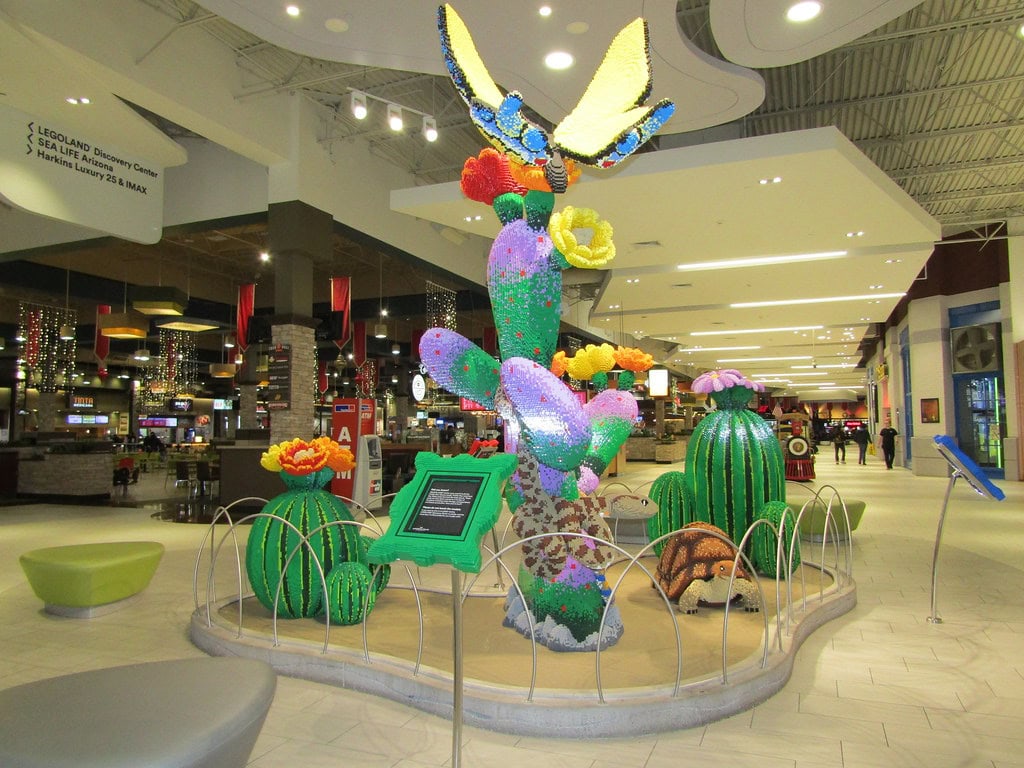
Law Enforcement and Criminal Charges
The quiet stretches of Arizona Mills shifted on September 13, 2024. A shooting occurred inside the food court during operational hours.
No one was injured, but bullets struck a table and a menu screen, according to police records. Early reports noted no immediate arrests and security footage played a major role in the follow-up investigation.
By October 29, Tempe Police announced that three individuals had been taken into custody. The charges were tied directly to the food court incident, with police citing ballistic evidence and surveillance images.
No closure or curfew followed the event, and the food court remained in use in the weeks that followed. Local coverage tracked the legal process more closely than the mall's internal operations.
🍀



